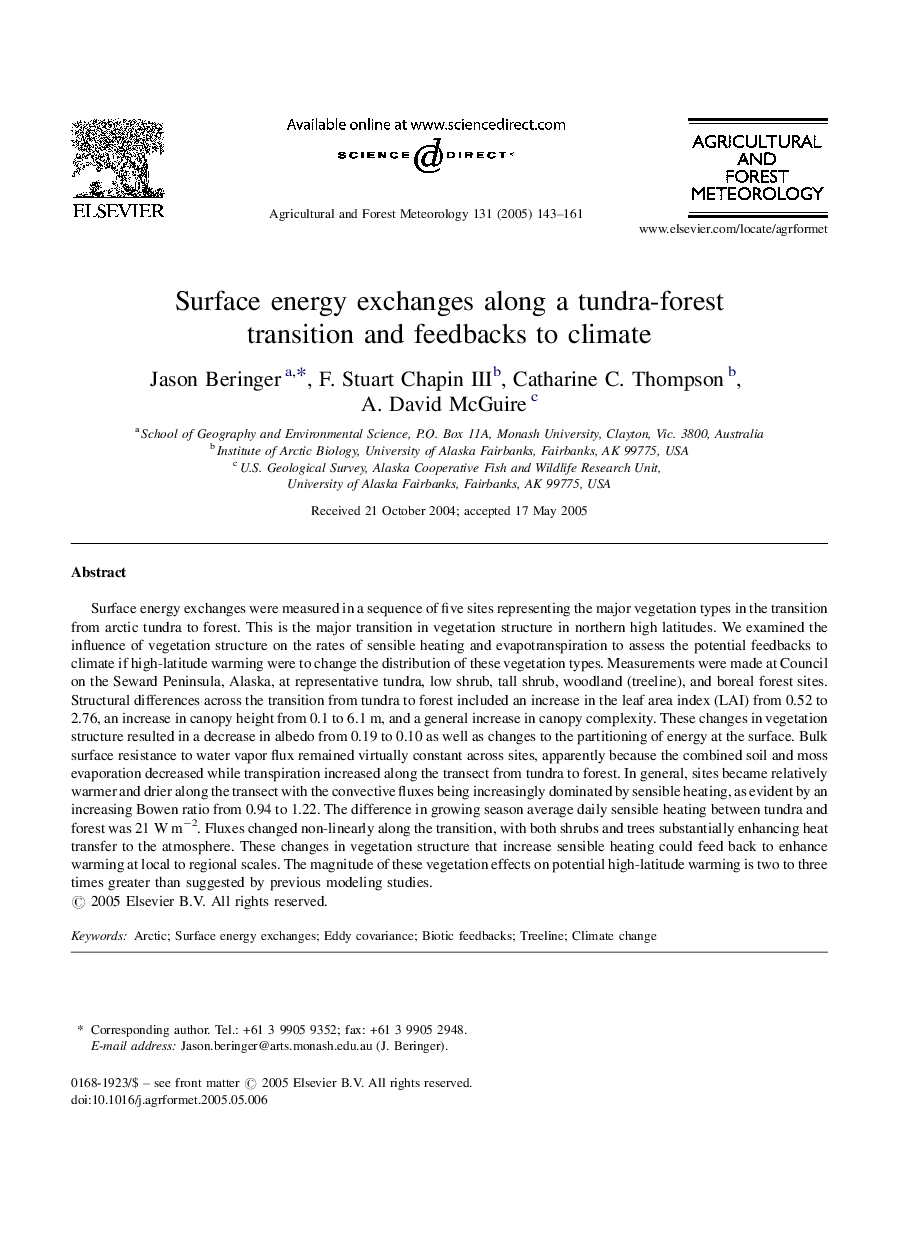| کد مقاله | کد نشریه | سال انتشار | مقاله انگلیسی | نسخه تمام متن |
|---|---|---|---|---|
| 9619472 | 158453 | 2005 | 19 صفحه PDF | دانلود رایگان |
عنوان انگلیسی مقاله ISI
Surface energy exchanges along a tundra-forest transition and feedbacks to climate
دانلود مقاله + سفارش ترجمه
دانلود مقاله ISI انگلیسی
رایگان برای ایرانیان
کلمات کلیدی
موضوعات مرتبط
مهندسی و علوم پایه
علوم زمین و سیارات
علم هواشناسی
پیش نمایش صفحه اول مقاله

چکیده انگلیسی
Surface energy exchanges were measured in a sequence of five sites representing the major vegetation types in the transition from arctic tundra to forest. This is the major transition in vegetation structure in northern high latitudes. We examined the influence of vegetation structure on the rates of sensible heating and evapotranspiration to assess the potential feedbacks to climate if high-latitude warming were to change the distribution of these vegetation types. Measurements were made at Council on the Seward Peninsula, Alaska, at representative tundra, low shrub, tall shrub, woodland (treeline), and boreal forest sites. Structural differences across the transition from tundra to forest included an increase in the leaf area index (LAI) from 0.52 to 2.76, an increase in canopy height from 0.1 to 6.1Â m, and a general increase in canopy complexity. These changes in vegetation structure resulted in a decrease in albedo from 0.19 to 0.10 as well as changes to the partitioning of energy at the surface. Bulk surface resistance to water vapor flux remained virtually constant across sites, apparently because the combined soil and moss evaporation decreased while transpiration increased along the transect from tundra to forest. In general, sites became relatively warmer and drier along the transect with the convective fluxes being increasingly dominated by sensible heating, as evident by an increasing Bowen ratio from 0.94 to 1.22. The difference in growing season average daily sensible heating between tundra and forest was 21Â WÂ mâ2. Fluxes changed non-linearly along the transition, with both shrubs and trees substantially enhancing heat transfer to the atmosphere. These changes in vegetation structure that increase sensible heating could feed back to enhance warming at local to regional scales. The magnitude of these vegetation effects on potential high-latitude warming is two to three times greater than suggested by previous modeling studies.
ناشر
Database: Elsevier - ScienceDirect (ساینس دایرکت)
Journal: Agricultural and Forest Meteorology - Volume 131, Issues 3â4, 31 August 2005, Pages 143-161
Journal: Agricultural and Forest Meteorology - Volume 131, Issues 3â4, 31 August 2005, Pages 143-161
نویسندگان
Jason Beringer, F. Stuart III, Catharine C. Thompson, A. David McGuire,